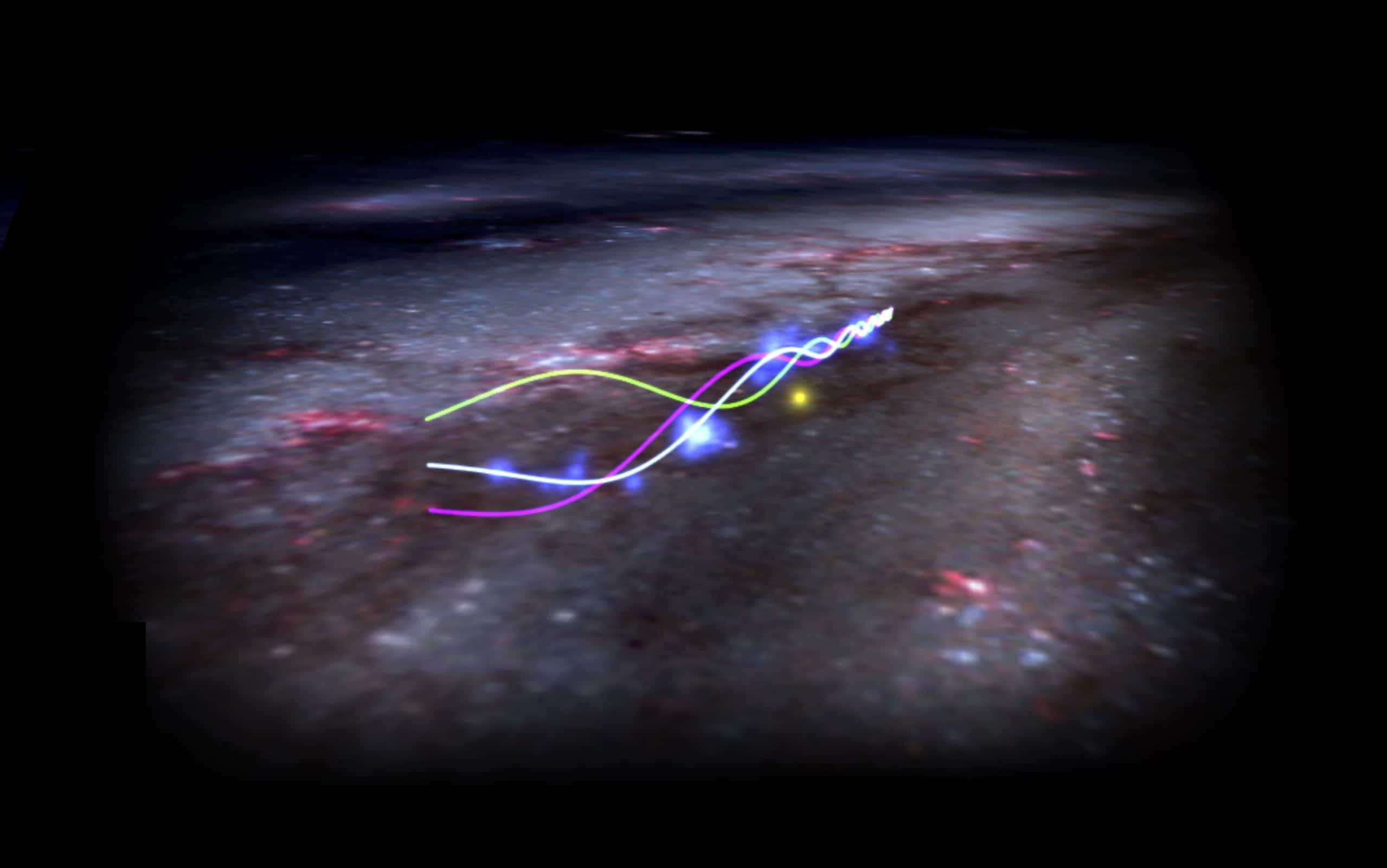
In recent years, astronomers made a remarkable discovery in our Milky Way galaxy—an enormous wave-shaped chain of gaseous clouds, now known as the Radcliffe Wave. This discovery, named in honor of the Harvard Radcliffe Institute where it was initially identified, represents one of the most significant findings in our galactic neighborhood. Now, new research found the Radcliffe Wave isn’t just a static structure; it oscillates through space. This movement was detailed in a study reported in the journal Nature.
“By using the motion of baby stars born in the gaseous clouds along the Radcliffe Wave, we can trace the motion of their natal gas to show that the Radcliffe Wave is actually waving,” said Ralf Konietzka, the paper’s lead author and Ph.D. student at Harvard’s Kenneth C. Griffin Graduate School of Arts and Sciences.
The Milky Way’s Boogie Wave
The multi-university team utilized data from the European Space Agency’s Gaia mission, combined with a “3D Dust Mapping” technique pioneered by Harvard professor Doug Finkbeiner. This innovative approach allowed them to map the 3D positions of stellar nurseries near the Sun, revealing the Radcliffe Wave in unprecedented detail.
The Radcliffe Wave is the largest coherent structure known within the Milky Way, lying just 500 light-years away from the Sun at its closest point and stretching over 9,000 light-years in length. Despite its proximity and size, it remained hidden until the development of high-resolution 3D models of the distribution of gaseous clouds near the sun.
The discovery of the Radcliffe Wave challenged previous understandings of our galactic neighborhood, demonstrating the existence of massive, coherent structures that astronomers were previously unaware of.
“It’s the largest coherent structure that we know of, and it’s really, really close to us,” said Center for Astrophysics researcher Catherine Zucker, who describes the collaboration’s work in a related Sky and Telescope article. “It’s been there the whole time. We just didn’t know about it, because we couldn’t build these high-resolution models of the distribution of gaseous clouds near the sun, in 3D.”
Further 2022 analysis using updated Gaia data allowed researchers to assign 3D motions to the young star clusters within the Radcliffe Wave. This analysis confirmed that the entire structure moves as a “traveling wave,” with star clusters oscillating up and down in a wave pattern that travels through our little section of the galaxy.
The discovery and subsequent analysis of the Radcliffe Wave’s motion have opened up new avenues for research. Astronomers are now exploring various theories regarding the formation and behavior of the Radcliffe Wave, ranging from the impacts of supernovae explosions to interactions with dwarf satellite galaxies. Intriguingly, the study also found that the motion of the Radcliffe Wave does not require significant amounts of dark matter to be explained, suggesting that the gravity of ordinary matter is sufficient to drive its oscillation.
“Theories for why the wave exists range from explosions of massive stars, called supernovae, to out-of-galaxy disturbances, like a dwarf satellite galaxy colliding with our Milky Way,” Konietzka said.
This discovery expands astronomers’ understanding of the structure and Milky Way dynamics. However, it also raises questions about the prevalence and behavior of similar waves in other galaxies. The Radcliffe Wave could represent the backbone of the nearest spiral arm of the Milky Way, implying that the spiral arms of galaxies may oscillate, making them more dynamic than previously thought.









